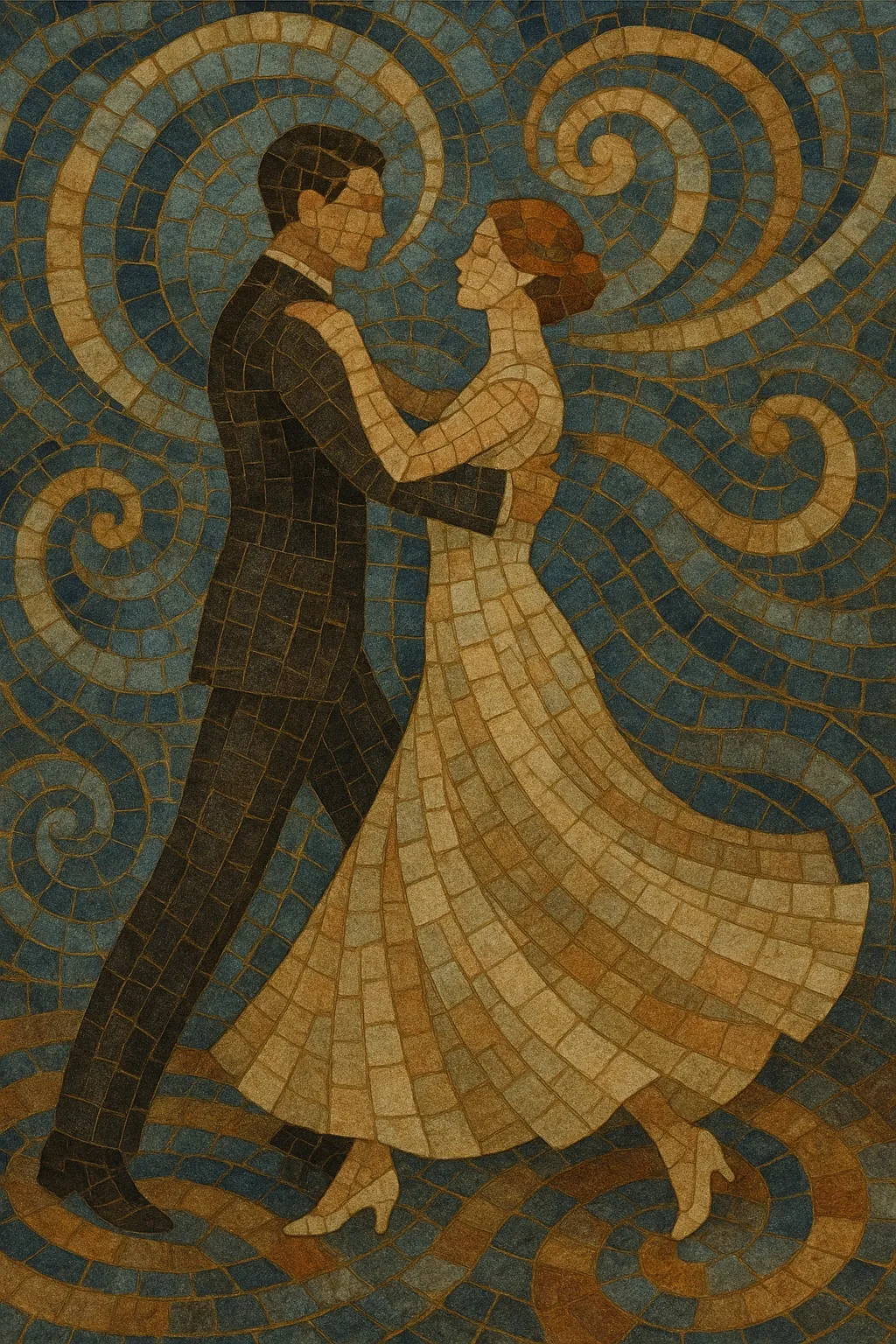Slow waltz is the International Standard ballroom form of the waltz, danced and played in a graceful 3/4 meter at a relatively unhurried tempo. It emphasizes long, legato melodic lines, rich orchestration, and a characteristic rise-and-fall that mirrors the dancers’ sweeping movement across the floor.
Unlike the faster Viennese waltz, slow waltz is intimate and lyrical, typically around 84–90 BPM (about 28–30 bars per minute). The musical texture often features a strong bass on beat one followed by light chordal accompaniment on beats two and three (the classic “oom–pah–pah”), supporting melodies that lean romantic, sentimental, and elegant.
The slow waltz grew out of 19th‑century waltz traditions that spread from Austria and Germany across Europe. A key transitional form was the American Boston, a slower, smoother waltz popular in the late 1800s that emphasized gliding steps and elongated phrasing. These elements informed the English development of a slower, more expressive ballroom waltz.
In the 1920s, British dance teachers and organizations (notably the Imperial Society of Teachers of Dancing) standardized the slow waltz’s technique, tempo, and figures. This “Modern” or “English” waltz became part of the International Standard syllabus, distinct from the faster Viennese waltz. Musically, bands and orchestras adapted romantic waltz idioms to the smoother tempo and phrasing preferred by competitive and social dancers.
From the 1930s through the 1960s, dance orchestras and light‑music ensembles recorded abundant slow waltz titles for ballroom use. Lush string writing, gentle woodwinds, and crooning melodies suited the form’s elegant aesthetic. The genre found a place in films, radio, and light entertainment, reinforcing its association with romance and refinement.
Today, slow waltz remains a cornerstone of ballroom competitions and social dance events worldwide. Arrangers continue to recast standards and contemporary songs into 3/4 at competition tempo, while specialized dance orchestras produce dedicated slow waltz albums that balance clear rhythmic drive with expressive melodic phrasing.


